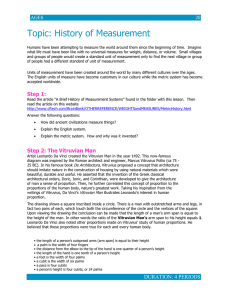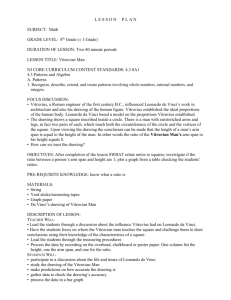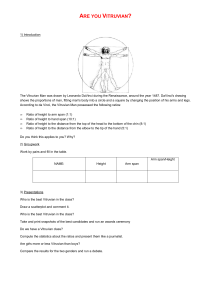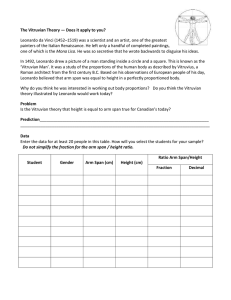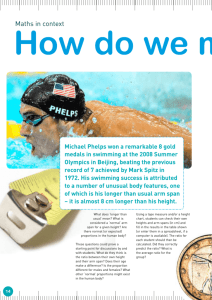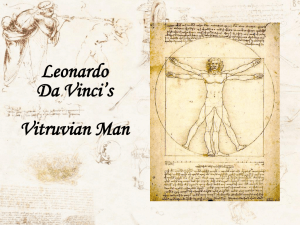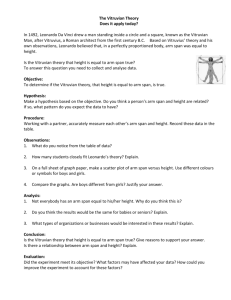Proportions
advertisement
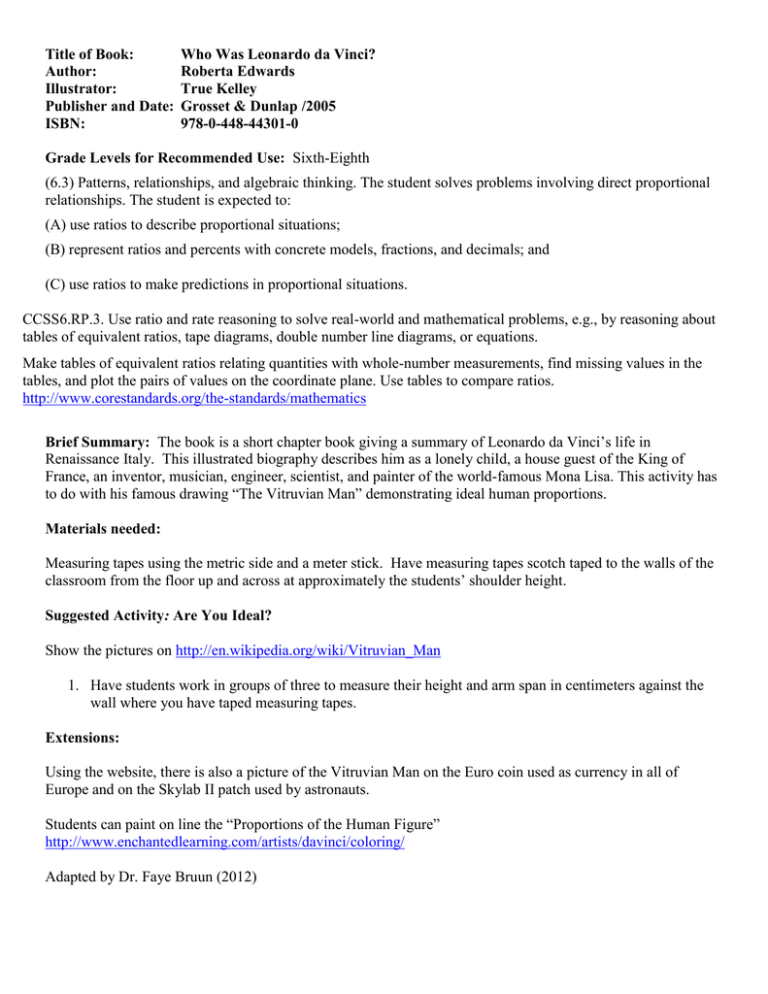
Title of Book: Author: Illustrator: Publisher and Date: ISBN: Who Was Leonardo da Vinci? Roberta Edwards True Kelley Grosset & Dunlap /2005 978-0-448-44301-0 Grade Levels for Recommended Use: Sixth-Eighth (6.3) Patterns, relationships, and algebraic thinking. The student solves problems involving direct proportional relationships. The student is expected to: (A) use ratios to describe proportional situations; (B) represent ratios and percents with concrete models, fractions, and decimals; and (C) use ratios to make predictions in proportional situations. CCSS6.RP.3. Use ratio and rate reasoning to solve real-world and mathematical problems, e.g., by reasoning about tables of equivalent ratios, tape diagrams, double number line diagrams, or equations. Make tables of equivalent ratios relating quantities with whole-number measurements, find missing values in the tables, and plot the pairs of values on the coordinate plane. Use tables to compare ratios. http://www.corestandards.org/the-standards/mathematics Brief Summary: The book is a short chapter book giving a summary of Leonardo da Vinci’s life in Renaissance Italy. This illustrated biography describes him as a lonely child, a house guest of the King of France, an inventor, musician, engineer, scientist, and painter of the world-famous Mona Lisa. This activity has to do with his famous drawing “The Vitruvian Man” demonstrating ideal human proportions. Materials needed: Measuring tapes using the metric side and a meter stick. Have measuring tapes scotch taped to the walls of the classroom from the floor up and across at approximately the students’ shoulder height. Suggested Activity: Are You Ideal? Show the pictures on http://en.wikipedia.org/wiki/Vitruvian_Man 1. Have students work in groups of three to measure their height and arm span in centimeters against the wall where you have taped measuring tapes. Extensions: Using the website, there is also a picture of the Vitruvian Man on the Euro coin used as currency in all of Europe and on the Skylab II patch used by astronauts. Students can paint on line the “Proportions of the Human Figure” http://www.enchantedlearning.com/artists/davinci/coloring/ Adapted by Dr. Faye Bruun (2012) Name:_______________________________________________Date:_________________________ Are You Ideal? The Vitruvian Man Measurement Lab The Vitruvian Man is a world renowned drawing with accompanying notes created by Leonardo da Vinci around the year 1492 as recorded in one of his journals. It depicts a male figure in two superimposed positions with his arms and legs apart and simultaneously inscribed in a circle and square. The drawing and text are sometimes called the Canon of Proportions or, less often, Proportions of Man. For centuries, artists such as Da Vinci have known that there are average proportions for certain parts of the human body that are useful in depicting human subjects accurately. Do you think there is a relationship between arm span and height? Between the length of the forearm and the length of the foot? According to Leonardo Da Vinci and Ancient Roman architect Vitruvius: the arm span length is equal to man’s height the distance from the armpit to elbow “pit” is one-eighth of a man's height the distance from the tip of the hand to the elbow “pit” is one-fifth of a man's height the length of the hand is one-tenth of a man's height the length of the ear is one-third of the face In this lab, you will be collecting data on yourself and your partners to see if you measure up to Da Vinci’s Vitruvian Man. ARE YOU IDEAL? Instructions: 1. Estimate the measurements of your body parts listed below, USE CENTIMETERS. Place answers in the table below a. Student’s height b. Students’s arm span c. Distance from the elbow “pit” to tip of hand d. Distance from the elbow “pit” to the armpit e. Length of the hand f. Length of ear g. Length of face 2. Use the measuring tapes secured to the wall, meter sticks and/or rulers find the actual measurements of same areas as in question #. Place answers in the table below. 3. Repeat instructions 1-2 for each person in the group. Student #1 Student #2 Student #3 Student’s height Student’s arm span Distance from the elbow “pit” to the tip of hand Distance from the elbow “pit” to the armpit Length of the hand Length of ear Length of face 4. Compare your values to Da Vinci’s and Vitruvius. Fill in the table below to see how “ideal” you were. Student 1: Student 2: Student 3: Did your measurement Did your measurement Did your measurement meet this ideal? meet this ideal? meet this ideal? the arm span length is equal to man’s height the distance from the armpit to elbow “pit” is one-eighth of a man's height the distance from the tip of the hand to the elbow “pit” is one-fifth of a man's height the length of the hand is one-tenth of a man's height the length of the ear is one-third of the face What portion of you was “ideal”? Adapted by Ibet Caro, (2011)
